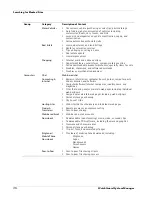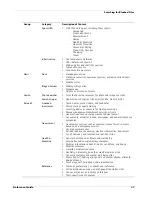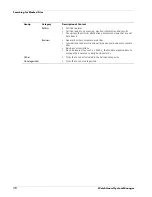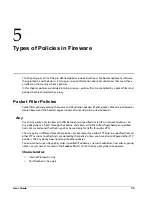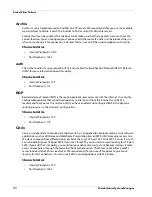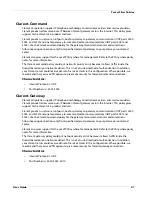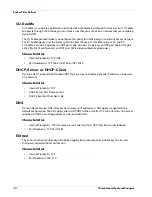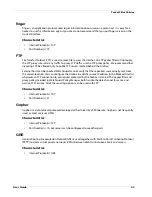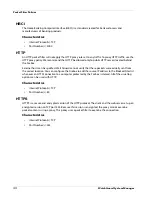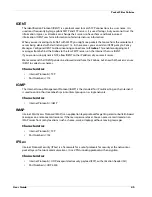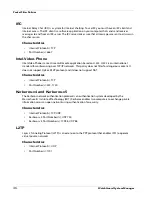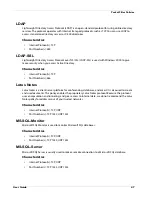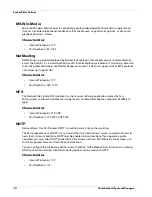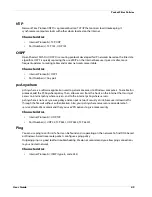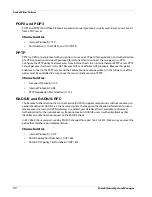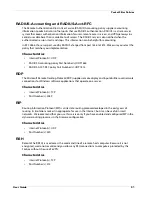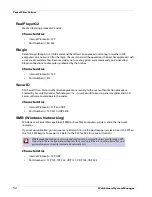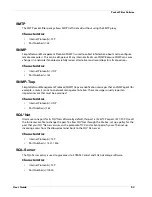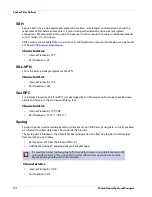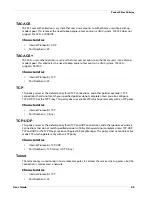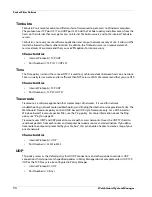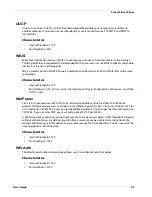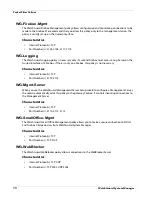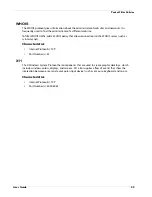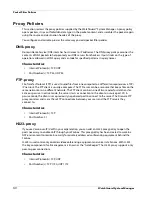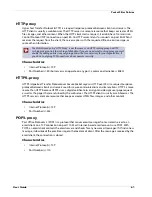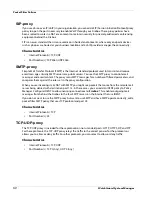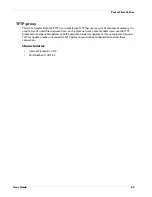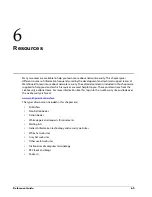
Packet Filter Policies
50
WatchGuard System Manager
POP2 and POP3
POP2 and POP3 (Post Office Protocol) are email transport protocols, usually used to get a user’s email
from a POP server.
Characteristics
•
Internet Protocol(s): TCP
•
Port Number(s): 109 (POP2), and 110 (POP3)
PPTP
PPTP is a VPN tunnel protocol with encryption. It uses one TCP port (for negotiation and authentication
of a VPN connection) and one IP protocol (for data transfer) to connect the two peers in a VPN.
Configure the PPTP policy to allow access from Internet hosts to an internal network PPTP server. PPTP
cannot get access to hosts’ static NAT because NAT cannot forward IP protocols. Because this policy
enables a tunnel to the PPTP server and the Firebox cannot examine packets in the tunnel, use of this
policy must be controlled. Be sure to use the most current version of PPTP.
Characteristics
•
Transport Protocol(s): TCP
•
Internet Protocol(s): GRE
•
PPTP Negotiation Port Number(s): 1723
RADIUS and RADIUS-RFC
The Remote Authentication Dial-In User Service (RADIUS) supplies remote users with secure access to
corporate networks. RADIUS is a client-server system that keeps authentication information for users,
remote access servers, and VPN gateways in a central user database that is available to all servers.
Authentication for the network occurs from one location. RADIUS uses an authentication key that
identifies an authentication request to the RADIUS client.
In RFC 2865, the server port used by RADIUS changed from port 1645 to 1812. Make sure you select the
policy that matches your implementation.
Characteristics
•
Internet Protocol(s): UDP
•
RADIUS policy Port Number(s): UDP 1645
•
RADIUS-RFC policy Port Number(s): UDP 1812

